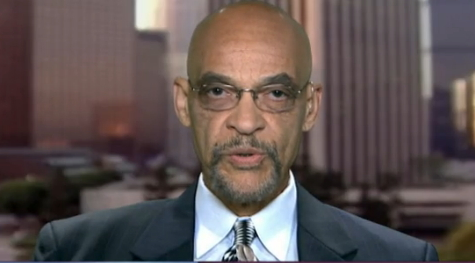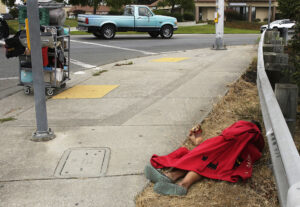Earl Ofari Hutchinson
The oft-told tale of horror has become both the stuff of legend and the stuff of caution about poverty and destitution. That’s the tale of woe of Shanghai China in the 1920s. Every morning dozens of bodies were swept up off that city’s streets. They were the poorest of the poor who were desperately sick, impoverished, scorned, and of course, homeless.
The plight of the homeless deceased in Shanghai then was often cited as a prime example of a poor, semi-colonial, grossly exploited, politically and economically impotent, war and strife torn nation that held its poor in callous contempt. Fast forward a century later, and that horror scene of the homeless dead being carted away each morning from Shanghai’s streets could easily be compared to the increasingly dire plight of the homeless on Los Angeles streets.
The shocking plight of L.A.’s homeless dead collected on its streets was driven home by Los Angeles Controller Kenneth Mejia. He reported that nearly one thousand persons died on L.A. streets in 2023. The good news was that the number of homeless dead had dropped from that of 2022. However, the near one thousand death total was almost certainly an undercount. Worse, it underscored the continued devastating impact and human tragedy of homelessness in L.A.
But it’s the mounting number of homeless dead on the streets that has been the public tragic face of the homeless crisis problem. And it’s a problem that L.A. city and county officials have wrung their hands over without really any firm answer as to why so many are dying and what can be done about it.
The search for answers has been intense. The search for solutions is even more so. But first the causes. The overwhelming majority of the deaths on the streets were categorized as “accidental.” This is a catch all designation that could relate to many causes other than homicide. But homicides did figure prominently as a major cause of death. They accounted for more than ten percent of the deaths.
The tragedy of homeless deaths due to murder was underscored by the fact that the unhoused accounted for barely one percent of the city’s population. There was little surprise that African Americans made up a disproportionate number of the homeless deaths even though they make up less than ten percent of the city’s population.
The checklist of causes of the deaths in addition to murder ranges all over the map. Drug overdoses, pedestrian and vehicle accidents, the full range of untreated diseases, heat and cold exposure, lack of vital medicines, and just plain old-fashioned neglect were the causes. Studies of homeless deaths in other cities show a similar pattern and a similar sharp uptick in the number of homeless deaths on the streets.
“People who die while experiencing homelessness are some of the most neglected in society,” said Matt Fowle, University of Washington researcher and co-creator of the organization Homeless Deaths Count. “These are folks who most need our help and are least likely to receive it.”
To date, there has been no systematic effort made by the federal government to track or count the number of homeless that die on the nation’s streets. That grim task has been left to local coroners and medical examiners. In some places they don’t even keep the figures that’s left to local nonprofits who deal with the issue and the problems of the homeless.
A look at one of the major causes of homeless deaths also provides a window of understanding as well as an opportunity for public officials to deal with the root cause of the deaths. That’s drug addiction and mental health treatment. The often paucity of drug and mental health treatment facilities has been a chronic problem.
The tales of individuals turned away from the few centers that have been set up to treat these illnesses are legion. This virtually ensures that unhoused individuals who suffer these problems are prime candidates to wind up in a body bag on some lonely street corner or alley. One study confirmed this. It found that homeless people in L.A. were a staggering thirty-five times more likely to die of drug or alcohol overdose than the general population. In almost all cases few of them had adequate access to vital treatment services and programs.
The surface answer and need are to radically increase the availability of and access to the array of programs from drug, alcohol, mental health, accident prevention, and safety programs to aid those unhoused most at risk from death. However, as all experts on the homeless crisis agree, the real answer is to solve the homeless crisis. That can only happen when there is a massive, concerted effort by local, state, and federal officials to ensure adequate affordable housing, jobs, education, and health services to all those who face life on the streets.
Anything less simply ensures that the streets of L.A. will be the modern-day version of Shanghai when it comes to the homeless and impoverished dead who are swept up yearly on the city’s streets.
Earl Ofari Hutchinson is an author and political analyst. The new YouTube documentary American Journalist chronicles his decades long writing and activism. https://www.youtube.com/watch?v=R1VqlDW2Fdk&t=343s
He also is the host of the weekly Hutchinson Report on KPFK 90.7 FM Los Angeles and the Pacifica Network.

